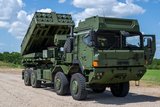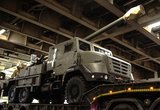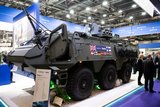New EU 'peace fund' could buy weapons
The EU wants to pay for military equipment, including lethal weaponry, for partner countries in crisis zones such as Africa's Sahel region as part of a $12.4 billion ‘peace facility’ launched on 13 June.
The bloc says the new European Peace Facility (EPF) is needed to make its training missions in three African countries more effective and to enable it to contribute to peacekeeping efforts elsewhere in the world.
But the EU paying for arms is a sensitive issue for some member states, especially when it involves countries with histories of political unrest and human rights abuses, and there could be resistance to the proposal.
The new EPF is being kept separate from the main EU budget to get around the bloc's rules against funding military projects.
The EU's diplomatic chief Federica Mogherini said the EPF – which needs approval by all of the bloc's member countries – would make it easier to help stabilise restive countries like Mali, Somalia and the Central African Republic.
Mogherini said: ‘The world is living in difficult times and this calls for a European Union responsibility and role on the global scene. Both Europeans and our partners in the world expect the EU to be more and more a security provider in our region and beyond.’
The proposal, made by the European Commission, the bloc's powerful executive arm, would see partner countries given ‘comprehensive support’, which officials said could include weapons.
Decisions about what to spend EPF money on would be taken by member states themselves, through the European Council.
An EU official told AFP that any decision to pay for weapons would take into account the bloc's human rights values and only in ‘very specific cases and after careful checking.’
Arms would only be provided as part of a package alongside training, and would not be the main focus of the EPF funding, the official said.
The fund hopes to improve the effectiveness of the EU's training missions in Africa.
The official pointed to the Somalia operation, where in some cases local forces have been unable to apply the training they have received because of a lack of equipment as basic as proper boots.
More from Land Warfare
-
![Hungary set to begin using Hero 400 loitering munitions]()
Hungary set to begin using Hero 400 loitering munitions
Developed by Israel's Uvision and with systems being sold in the thousands to multiple European NATO countries and the US, the Hero family of loitering systems is also in production in the US and Italy, the latter through Rheinmetall.
-
![Light Reconnaissance Strike – enabling a vital mission set (Studio)]()
Light Reconnaissance Strike – enabling a vital mission set (Studio)
A new system-of-systems concept will unlock digital integration of sensors and weapons for Light Forces, allowing them to shape the battlefield environment on their own terms and upgrade legacy platforms.
-
![Lockheed Martin to look further afield for GMARS rocket system opportunities]()
Lockheed Martin to look further afield for GMARS rocket system opportunities
The HX truck is already in use in many NATO and allied countries around the world as a logistics vehicle and carrier for high-value systems, including missile firing weapons, so its use for the Global Mobile Artillery Rocket System makes logistical sense.
-
![Lithuanian 1st Division to achieve initial operating capability in 2026]()
Lithuanian 1st Division to achieve initial operating capability in 2026
Lithuania is one of the countries stepping up its defences in the face of the war in Ukraine with a particular focus on its neighbour and Russian ally Belarus, which has been making incursions into Lithuania’s airspace with balloons and drones.
-
Medium knocked out of British Army LMP, with CAVS as heavyweight champion
As the British Army seeks to modernise and consolidate its diverse vehicle fleet, yet another change in direction is underway.

























